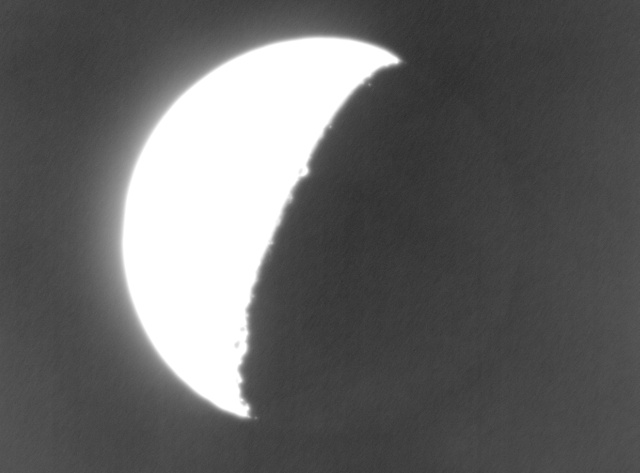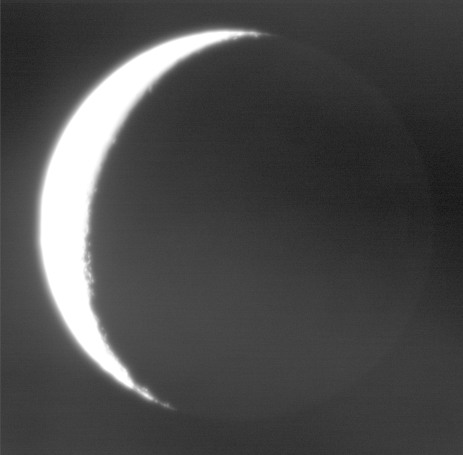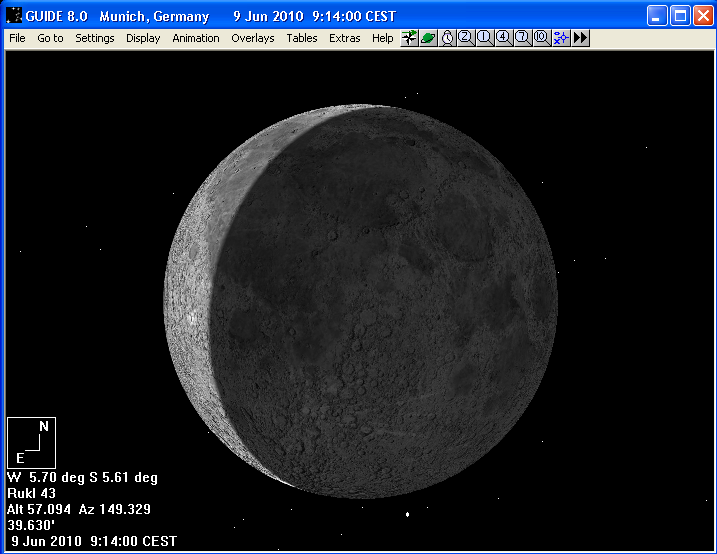Earthshine in daylight
Version of 14. June 2010, Martin Elsässer
Inspired by the wonderful works of Vincent Jacques i also tried to capture the earthshine of the moon during the day.
Using a small 70mm refractor and the DMK41 camera with a IR-pass filter, the Lucam Recorder software was again used to good effect. After capturing a flat-field of 1000 images, Lucam Recorder was set to stack 4 images, apply the flat and do a contrast stretch. 550 images of this type were stored and stacked in the Giotto software. The result clearly showed the earthshine.

Earthshine in daytime on 6. June 2010, around 10:15 UT+2.
Skies were blue but far from perfect.
Details in earthshine
Following the procedure outlined below, i could capture some coarse structures of maria in the earthshine on 9. June 2010 at 09:14 UT+2. Alas, the brightness of the image background is not uniform, due to faint clouds moving through.

|

|
|
Earthshine in daylight, as sum of 2400 images.
|
Rendering in Gudie 8, for Comparison.
|
How to capture the earthshine in daytime
From my experiments i have come up with the following list of steps to follow:
-
This is all about contrast, so you need good blue skies.
-
Use a low noise monochrome ccd camera with fast frame rate and uncompressed digital output.
-
Choose your focal length, so the complete moon fits in the field of view. You need the crescent for alignment and some room for drifting.
-
Choose optics and setup so as not to loose contrast: use baffles to shield the lens from direct sunlight.
-
Choose a suitable red / near-infrared filter: As infrared as possible, but not so dark that you need to increase the gain to get the desired level of brightness or to force a too long exposure time for your chosen framerate. The optimal choice of filter will depend on background brightness (weather, elongation), optics and camera.
-
Capture MANY images, several hundreds at least. The more the better, but the result only improves slowly with more images, with the square root of the number of images.
-
Acchieve a background brightness of about 200 for a 8 bit system, so as not to leave the linear region.
-
Capture a flat-field with a similar number of images, in a near-by sky region and with the same camera settings. The flat is really critical, if you can not do the drift procedure described below.
-
Make the moon slowly drift across the chip while capturing your stream of images, so that you average over very many different pixels when stacking the images. Of course, your stacking software must be able to align the images on the visible part of the moon reliably.
-
What role might the gamma setting of the camera play? Could it be used to stretch contrast in the analog stages of the camera? What effects does this have on the flat-field?
Will do more experiments when better weather returns.
back to start page



